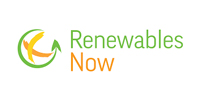
A battery storage project aimed at adding more carbon-free power to California’s electric grid is about to launch in the San Diego area.
EnerSmart, a renewable energy company based in San Diego and Boulder, Colorado, has signed a $20 million order with Eos Energy to install 10 facilities of 3-megawatts each that will employ zinc battery storage technology. Each of the projects will supply enough energy to power about 2,000 homes.
Seven of the 10 storage sites will be located in San Diego County and EnerSmart plans to have each one up and running by the end of the year.
The deal will provide at least 30 megawatts of utility-scale battery storage capacity to the grid. Over the next 24 months, EnerSmart has an option with Eos Energy to double both the size of its investment and the number of the project’s battery storage sites.
“If there’s a need for more, then we’ll do more,” said James Beach, managing partner at EnerSmart.
The seven facilities already under contract will be installed in Chula Vista, El Cajon, Imperial Beach, Lakeside, Ramona, along with two in San Diego.
“What makes our projects unique is that because they are 3-megawatt, the energy can go into lower voltage distribution lines so we’re really providing voltage support to the local communities,” Beach said.
The electricity and voltage support discharged from the 10 batteries will go to the California Independent System Operator, or CAISO, the nonprofit corporation that manages about 80 percent of the power grid in the state.
Energy storage is taking on a larger and more pivotal role in California’s power mix. Under the state’s Renewable Portfolio Standard, 60 percent of California’s electricity must come from renewable sources by 2020. In 2045, 100 percent is slated to be derived by sources that emit zero carbon.
read more













